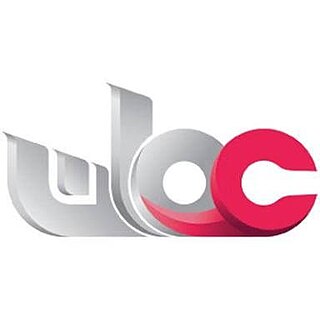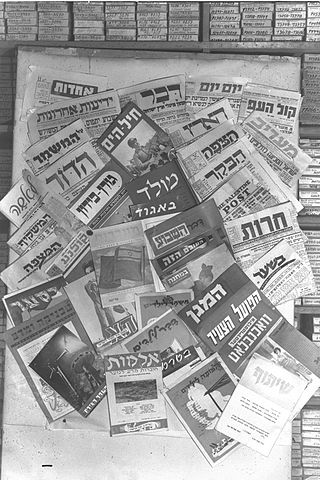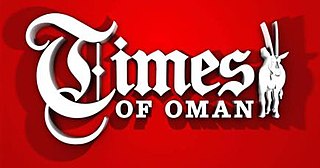Related Research Articles

Oman, officially the Sultanate of Oman, is a country in West Asia. It is located on the southeastern coast of the Arabian Peninsula, and overlooks the mouth of the Persian Gulf. It shares land borders with Saudi Arabia, the United Arab Emirates, and Yemen, while sharing maritime borders with Iran and Pakistan. The capital and largest city is Muscat. Oman has a population of nearly 4.7 million and is the 124th most-populous country. The coast faces the Arabian Sea on the southeast, and the Gulf of Oman on the northeast. The Madha and Musandam exclaves are surrounded by United Arab Emirates on their land borders, with the Strait of Hormuz and the Gulf of Oman forming Musandam's coastal boundaries.

Muscat is the capital and most populated city in Oman. It is the seat of the Governorate of Muscat. According to the National Centre for Statistics and Information (NCSI), the total population of Muscat Governorate was 1.72 million as of September 2022. The metropolitan area spans approximately 3,500 km2 (1,400 sq mi) and includes six provinces called wilayats, making it the largest city in the Arabian Peninsula by area. Known since the early 1st century AD as an important trading port between the west and the east, Muscat was ruled by various indigenous tribes as well as foreign powers such as the Persians, the Portuguese Empire and the Ottoman Empire at various points in its history. A regional military power in the 18th century, Muscat's influence extended as far as East Africa and Zanzibar. As an important port-town in the Gulf of Oman, Muscat attracted foreign traders and settlers such as the Persians, Balochs and Sindhis. Since the accession of Qaboos bin Said as Sultan of Oman in 1970, Muscat has experienced rapid infrastructural development that has led to the growth of a vibrant economy and a multi-ethnic society. Muscat is termed as a Beta - Global City by the Globalization and World Cities Research Network.

Salalah is the capital and largest city of the southern Omani governorate of Dhofar. At the 2020 census, it had a population of 331,949.

The Sultanate of Muscat and Oman, also known briefly as the State of Muscat and Oman during the rule of Taimur bin Feisal, was a sovereign state that encompassed the present-day Sultanate of Oman and parts of present-day United Arab Emirates and Pakistan, in the second half of the 19th century and 20th century. Ruled by the Busaid dynasty, it was established as a result of the partition of the Omani Empire upon the death of its last ruler Said bin Sultan. The Sultanate transitioned into a new form of government after the palace coup of 23 July 1970 in which the sultan Said bin Taimur was immediately deposed in favor of his son Qaboos bin Said.
Education in Oman is provided free of charge up to end of secondary education, though attendance is not mandatory at any level. In 1970 there were only three formal schools with 900 students in the whole state. Oman's national educational program expanded rapidly during the 1970s and the 1980s, with the Kingdom of Saudi Arabia sending teachers on its own expense during that time period. In 2006–2007 about 560,000 students attended 1053 public schools. The number of students in private schools is about 65,000. There are also extensive programmes to combat adult illiteracy. Sultan Qaboos University, the only national university near Muscat, was founded in 1986, and in 2006 it had 13,500 students. The Human Development Report found the literacy rate to be 93.0% in adults, up from 54.7% in 1990. For the same period, the youth literacy rate increased from 85.6 to 97.3%. Public expenditure on education was reported to be 4.6% of GDP and 26.1% of total government spending.
Mass media in Morocco includes newspapers, radio, television, and Internet.

Oman TV is the national television channel broadcaster in the Sultanate of Oman. The channel began broadcasting from the city of Muscat on 17 November 1974, using Intelsat, and from Salalah on 25 November 1975. Since 1997, Oman TV has broadcast its programs through its website.
The media of Libya consists of a broad range of newspapers, TV channels, radio stations, and websites mostly set up during or after the Libyan Civil War, which removed previously tight restrictions on freedom of the press and freedom of speech. By the summer of 2012, there were over 200 registered newspapers, over 20 TV channels, and 200 radio stations.

There are over ten different languages in the Israeli media, with Hebrew as the predominant one. Press in Arabic caters to the Arab citizens of Israel, with readers from areas including those governed by the Palestinian National Authority. During the eighties and nineties, the Israeli press underwent a process of significant change as the media gradually came to be controlled by a limited number of organizations, whereas the papers published by political parties began to disappear. Today, three large, privately owned conglomerates based in Tel Aviv dominate the mass media in Israel.

Times of Oman is a daily newspaper which published in the Sultanate of Oman. Established in 1975, the newspaper is the oldest English-language paper of Oman. Apart from daily news on local, regional, international, business and sport interests, It provides information on topics such as entertainment, fashion and lifestyle, education, information and technology, health and books.

The following outline is provided as an overview of and topical guide to Oman:
The mass media in Iraq includes print, radio, television, and online services. Iraq became the first Arab country to broadcast from a TV station, in 1954. As of 2020, more than 100 radio stations and 150 television stations were broadcasting to Iraq in Arabic, English, Kurdish, Turkmen, and Neo-Aramaic.

The mass media in Syria consists primarily of television, radio, Internet, film and print. The national language of Syria is Arabic but some publications and broadcasts are also available in English and French. While television is the most popular medium in Syria, the Internet has become a widely utilized vehicle to disseminate content. Transcending all available media, the government seeks to control what Syrians see by restricting coverage from outside sources. Publications and broadcasts are monitored by members of the government. All mass media outlets are under the supervision of the Ministry of Information. Third article of the 2013 Information Ministry guidelines stipulate that purpose of all media outlets is "to enlighten public opinion" in line with the ideological doctrines "of the Arab Socialist Ba’ath Party and the policy of the state".
Mass media in the United Arab Emirates is subject to government control and censorship. Media freedom is severely curtailed in the UAE. Most UAE media is owned by the government or by groups that have ties to the government. UAE law permits the government to censor content critical of the government. Journalists and writers who criticize the government are subject to repression.
Yemen's Ministry of Information influences the mass media through its control of printing presses, granting of newspaper subsidies, and ownership of the country's only television and radio stations. Yemen has nine government-controlled, 50 independent, and 30 party-affiliated newspapers. There are approximately 90 magazines, 50 percent of which are private, 30 percent government-controlled, and 20 percent party-affiliated. The government controls the content of news broadcasts and edits coverage of televised parliamentary debates.
The National Museum of the Sultanate of Oman is a museum located in Oman. It was developed as a result of a ten-year collaboration between the Ministry of Heritage and Culture, the Royal Estate Affairs of Oman, Jasper Jacob Associates (J.J.A.), and Arts Architecture International Ltd (A.A.I.), and opened to the public in 2016.

The Jebel Akhdar War, also known as the Jebel Akhdar Rebellion or the Oman War, broke out in 1954 and again in 1957 in Oman, as an effort by the local Omanis in the interior of Oman led by their elected Imam, Ghalib al-Hinai, to protect the Imamate of Oman from the occupation plans of Said bin Taimur, sultan of Muscat and Oman, backed by the British government, who were eager to gain access to the oil wells in the interior lands of Oman. Sultan Said received direct financing to raise an armed force to occupy the Imamate of Oman from Iraq Petroleum Company (IPC), a consortium of oil companies that was majorly owned by what is known today as Royal Dutch Shell, Total, ExxonMobil and British Petroleum (BP); the latter was majority-owned by the British government.
The General Organization of Radio and TV, also known in French as Organisation de la Radio et la Télévision Arabe Syrienne, is the state and public broadcaster in Syria and reports to the Ministry of Information. Earlier names were Radio and Television and Syrian Radio & Television (SRT).
Azamn is an independent Arabic newspaper in the Sultanate of Oman on the Arabian peninsula. It was suspended by the Omani government on August 9, 2016 following a report about senior Omani officials pressuring the country's judiciary to overturn a decision in an inheritance case. On September 26, a court ordered its permanent closure.

Mohammed bin Said bin Salim Al Shanfari was an Omani dramatist playwright and director. It was said of him that “His ideas inspired a generation.” He spent his working life advancing the cause of drama and the theatre. He received several awards in recognition of his work together with favourable reviews in Arabian media while he was alive, and also after his death.
References
- ↑ "BTI 2016: Oman Country Reports". Bti-Project. Transformation Index. Retrieved March 6, 2018.
- 1 2 3 4 Freedom House writers (2015). "Oman". Freedom House . Retrieved March 5, 2018.
- 1 2 Gunter, Barrie; Dickinson, Roger, eds. (2013). News Media in the Arab World: A Study of 10 Arab and Muslim Countries. London, England: Bloomsbury Publishing USA. ISBN 9781441144881.
- 1 2 Douai, Aziz; Ben Moussa, Mohamed, eds. (2016). Mediated Identities and New Journalism in the Arab World: Mapping the 'Arab Spring'. New York City: Springer Publishing. p. 166. ISBN 9781137581419.
- 1 2 3 4 5 6 7 8 9 10 11 12 13 14 15 16 17 18 19 "Oman Profile – Media". BBC. January 13, 2015. Retrieved March 5, 2018.
- 1 2 3 Douai, Aziz; Ben Moussa, Mohamed, eds. (2016). Mediated Identities and New Journalism in the Arab World: Mapping the 'Arab Spring'. New York City: Springer Publishing. p. 169. ISBN 9781137581419.
- ↑ "Printing and Publishing Law". Oman info. Retrieved March 6, 2018.
- 1 2 3 "Third Journalist from Azamn Newspaper Arrested in Oman". Committee to Protect Journalists. August 10, 2016. Retrieved March 6, 2018.
- ↑ "Oman Newspapers". Online Newspapers. Retrieved March 6, 2018.
- ↑ Yushi Chiba (2010). "Media History of Modern Egypt: A Critical Review". Kyoto Working Papers on Area Studies: G-COE Series. p. 6. hdl:2433/155745.
- ↑ "World Radio Day: The History of Radio in the Sultanate". Atheer. Retrieved March 6, 2018.
- ↑ Fahad, Maryam Bin (2012). Arab Media Outlook 2011–2015 (PDF) (4th ed.). Dubai Press Club. p. 197. ISBN 978-9948-16-526-2. Archived from the original (PDF) on March 27, 2019. Retrieved April 23, 2019.
- ↑ Al-Kindi, Abdullah; Zahra, Iman. "Journalists in Oman" (PDF). epub.ub.uni-muenchen. Worlds of Journalism. Retrieved March 5, 2018.
- ↑ Douai, Aziz; Ben Moussa, Mohamed (2016). Mediated Identities and New Journalism in the Arab World. Springer. p. 166. ISBN 9781137581419.
- 1 2 Douai, Aziz; Ben Moussa, Mohamed (2016). Mediated Identities and New Journalism in the Arab World. Springer. p. 175. ISBN 9781137581419.
- 1 2 Muscat English FM Radio, urbanmuscat blog